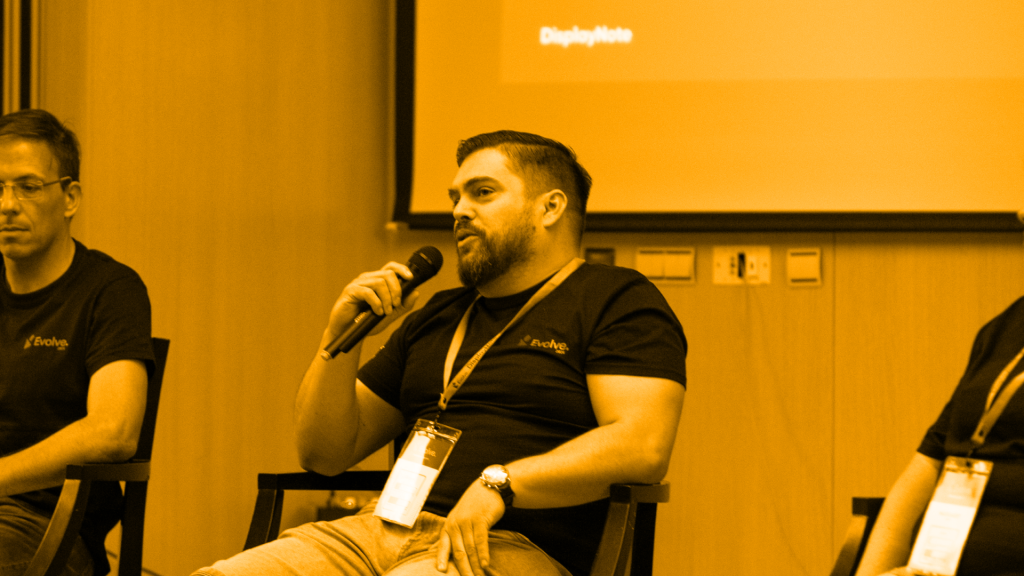
Why you need to embrace the pop-up huddle space.
Organisations often focus their efforts on designing one extravagant boardroom, kitted out with the latest technology, super slick (but not the most comfortable) chairs, and a table that’s so big, you’d need a megaphone to communicate with the person at the other end.
However, there’s been a shift over the last 4 to 5 years towards a more ad-hoc space, that is designed to do the job. What we’re now seeing is teams being asked to set up huddle spaces really quickly.

Unlike large boardrooms or conference rooms, huddle rooms are small meeting spaces where more intimate groups can get together for quick discussions, meetings, and brainstorming. They focus on uninterrupted collaboration and are usually equipped with display screens, including webcams, speakers, and interactive whiteboards.
Huddle rooms allow for faster flow of ideas, agile working, SPRINTs, and spontaneous or last-minute meetings.
By nature, huddle rooms usually have no formal procedure to book in advance, so coming together to meet in these rooms is often spontaneous, quick, efficient, and very effective.We’ve previously discussed 5 reasons to embrace huddle rooms and their benefits.
They provide a quiet, intimate space that boosts collaboration, without noise or distractions. They don’t require booking in advance. Everyone encounters the need for spontaneous collaboration, but it’s often thwarted because there is no suitable space for this to occur – until huddle spaces that is.
Huddle spaces ensures everyone is part of the meeting. Because there’s a smaller group, it’s less intimidating, and encourages participants to speak out and contribute. A smaller space also allows remote workers to feel that they are truly part of the conversation.
These benefits combined with collaboration solutions, provide a truly productive space for your team.
But we want to talk about the “pop up” huddle space, and why it’s important that you embrace it.
The pop-up huddle space.
Work is becoming increasingly fast-paced. Your employees will not want to wait for a meeting room to become free. Customer experience (CX) ecosystems thrive on information-fuelled collaborations, and a place for this collaboration needs to be accessible.
Most meeting rooms in organisations often need to be booked in advance. If they are lacking in huddle rooms, spontaneous get-togethers can be difficult, especially when people want to collaborate or share content and ideas.
A huddle room doesn’t need to be a room at all – it can simply be a ‘space’.
And if you have a space in in your office that includes a screen – you can set up a huddle space in a matter of minutes. If you need to contact IT to provide a portable screen, perhaps add an hour or so to the wait time – but the option of setting up a temporary meeting area in a short period of time, focusing on small groups of collaboration, will boost productivity and effectiveness within your organisation.
In order for these temporary huddle spaces to be at their most effective, staff should be able to instantly deploy a wireless presentation or collaboration solution on to their PC or device. This will allow them to gather in any space with a screen, and share content, ideas, and feedback in real time.
They can even communicate with remote employees via built in video conferencing solutions, or alternatively use their preferred video conference solution.
You also need to consider whether there will be guests in the meeting, and the ability of getting them connected quickly and easily. Collaboration solutions that allow connection via web browser are most suited to guest access, as they don’t need permissions to download any additional software or apps.
Even though these spaces are ad-hoc and temporary, they need to be super secure. Which is something to keep in mind when researching wireless presentation or collaboration solutions. Check how they keep the transmission of data secure, and how meeting attendees join a collaboration session, such as a unique meeting ID or PIN.
Pop-up huddle space checklist.
So to recap, what you need for a pop-up huddle space:
- A screen
- A wireless presentation or collaboration solution
- A camera and speakers (if people are joining remotely)
- A PC or laptop
Next steps…
Months of planning no longer need to be wasted designing a permanent huddle room for your organisation – if your team have access to a screen and a collaboration solution on their devices, they’re good to huddle!
At DisplayNote, our mission is to create a world where the sharing of content is as easy as saying ‘hello’.
We create solutions to bring people, ideas, and information closer together. We break down the barriers that stand in the way of effectively sharing information and ideas in meeting spaces – barriers such as location, network, and device type.
Our approach focuses on simplicity, flexibility, and security.
Want to stay in the loop?
Keep up-to-date with everything DisplayNote – including new releases, job openings, and customer giveaways.
Don’t worry, we’ll not spam you and we’ll never share your email with anyone






